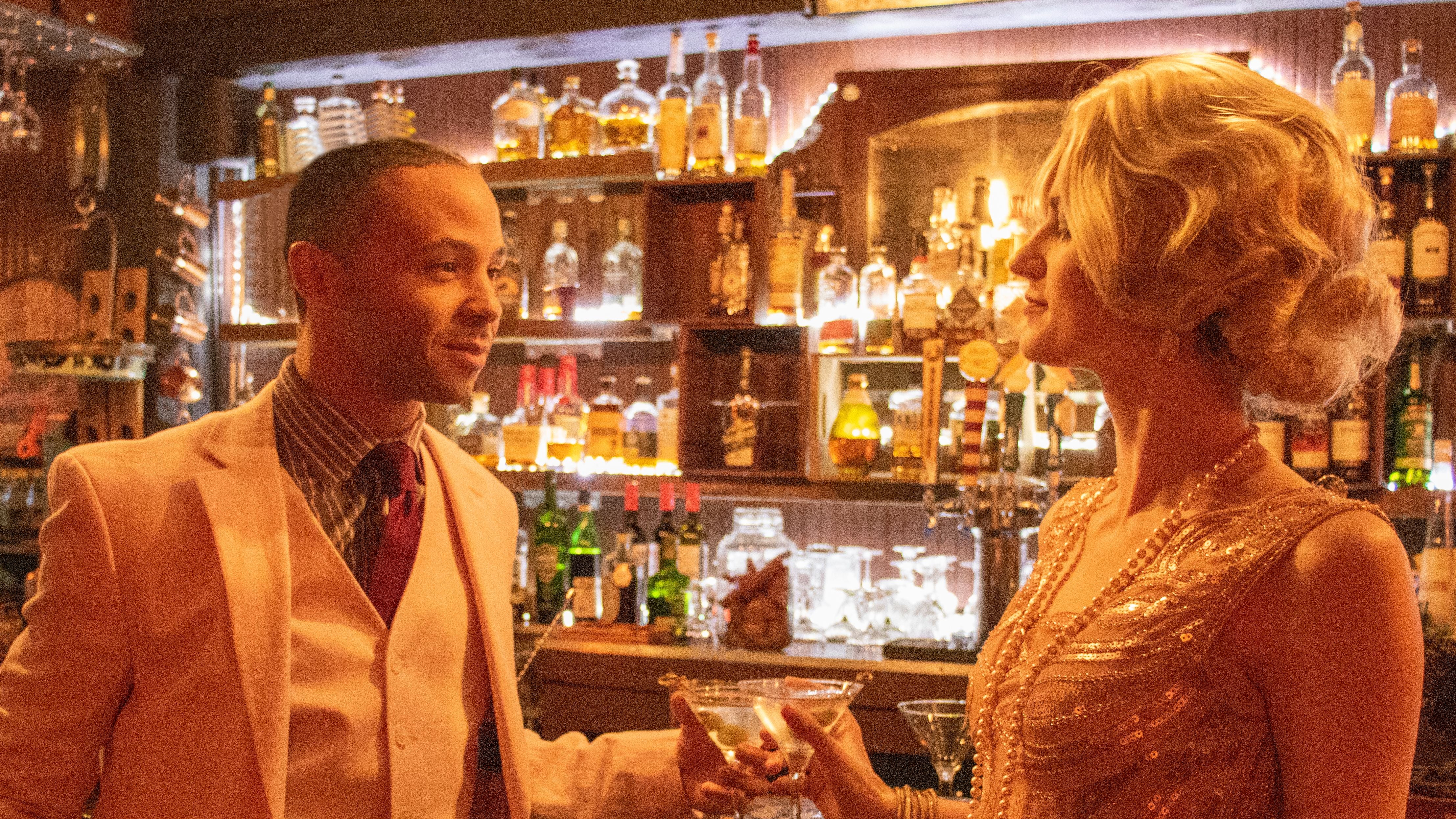In The Great Gatsby, F. Scott Fitzgerald writes that Jay Gatsby has “tanned skin” and “cropped hair.” For some readers, those aren’t just physical descriptors—they’re two of countless clues that Fitzgerald intended Gatsby to be a Black man passing as white.
“I feel when you apply this kind of theory, it really makes it a more important story to tell,” says Alisa Stewart, artistic director of the Experience Theatre Project. “It’s not just a frivolous jazz age story of love and loss and the mystery of Gatsby.”
In ETP’s Great Gatsby’s Daisy, Stewart tells the story the way she believes Fitzgerald wanted. Inspired by Janet Savage’s book Jay Gatsby: A Black Man in Whiteface, she chronicles the anguishes and advantages of passing—and reimagines the novel from the perspective of Daisy (Voni Kengla), who remains the focus of Gatsby’s affection and obsession.
Great Gatsby’s Daisy has been a turbulent production, not least of all because finding Gatsby was difficult—Justin Heath, a Los Angeles actor, was eventually cast. Stewart spoke to WW about decoding Fitzgerald’s intentions and creating an immersive production that allows the audience to move with the actors.
WW: When you first read The Great Gatsby, was there a part of you that suspected maybe there’s more going on here than meets the eye?
Alisa Stewart: I read a little bit about the original titles that the author wanted, which were Trimalchio or Trimalchio at West Egg. The original Trimalchio [in the Roman comedy The Satyricon] was a freed slave who is able to earn riches in illicit ways, and it just kind of dawned on me. And then when I saw [Jay Gatsby: A Black Man in Whiteface], my jaw kind of dropped and I said, “Oh my gosh, somebody a lot smarter than me has looked into this.”
I’m a fan of plays that allow the audience to move with the actors. I liken it to watching a movie in 3D, or virtual reality without the goggles. Can you talk about how that serves the story and what the audience can expect to experience physically as the play unfolds?
When people ask, “What is immersive theater?” I always say, “Well, it’s kind of a cross between a haunted house that doesn’t scare you and a Disney experience.” When you walk into a space, you’re invited to be part of this world. So you go from [a speakeasy club called the Miramar] into a graveyard setting, from that setting into the Buchanan mansion, and from the Buchanan mansion you go into Nick Carraway’s house.
You’re essentially witnessing the story in very much, as you said, a 3D fashion, but it’s real. It’s all around you. And it’s a real thrill to have that happen when you’re watching a scene just a foot away from you as opposed to 50 feet away on the stage.
Are there other classic works of literature that you would like to break down and find new meaning in?
The book that’s sitting on my shelf right now is 1984. We’re in kind of a thought-process stage: “Is this even doable?”
SEE IT: Great Gatsby’s Daisy plays at Beaverton Masonic Lodge, 4960 SW Watson Ave., Beaverton, 503-568-1765, experiencetheatreproject.org. 7:30 pm Friday, 2 and 7:30 pm Saturday, 2 pm Sunday, through Feb. 20. $52.
